Stephen Canner / December 17, 2020
This is a revision of a piece that was originally published at Mediated Signals.
A curious ad appeared in the August 1955 issue of Ray Palmer’s Mystic Magazine. It announced the release of an LP that would allow readers the opportunity to hear the voice of someone called Yada Di Shi’ite. It went on to say that the record contained “a true aural picture of a typical lecture given by the teachers of the Inner Circle through Mark Probert.” As puzzling as this may sound to us today, regular readers of Mystic would have been very familiar with both Yada and Probert. What is not obvious from the information given is that this might well be the earliest example of a commercially released vinyl record related to the UFO phenomenon. Unfortunately, no copies of the record are known to exist, and to my knowledge very few collectors are even aware of it. But how this record came to be made and its relationship to early UFO culture is something of a tale.
On October 14, 1946, The Los Angeles Daily News reported that a number of people in San Diego believed that “a space ship from another planet” had attempted to make contact with Earth during the previous week’s meteor shower, an event caused by the passing of the Giacobini-Zinner comet. Although local authorities received no reports of anything out of the ordinary, at least a dozen people told the paper that on October 9 they had witnessed a “large and weird object” in the sky over the city. One witness was quoted as saying, “It was shaped like a bullet and left this vapor trail behind it.” Another observed that it had “something that looked like wings.” The article curiously went on to say that local occult publisher Meade Layne was “putting a medium to work on the supposed sighting.” That medium was Mark Probert.
According to the brief autobiography published in the 1963 edition of his book The Magic Bag, Mark Probert was born in Bayonne, New Jersey, in 1907. As a teenager he joined the Merchant Marine. But after only two years at sea, he disembarked at San Diego and decided to stay. There he worked briefly as a jockey and a bellhop, before moving into vaudeville as a “song and dance man.” By the 1930s, vaudeville was dying, so in 1939 he took a job as a graphic artist with the Visual Education Department of the San Diego public school system. It was there he met his wife Irene.
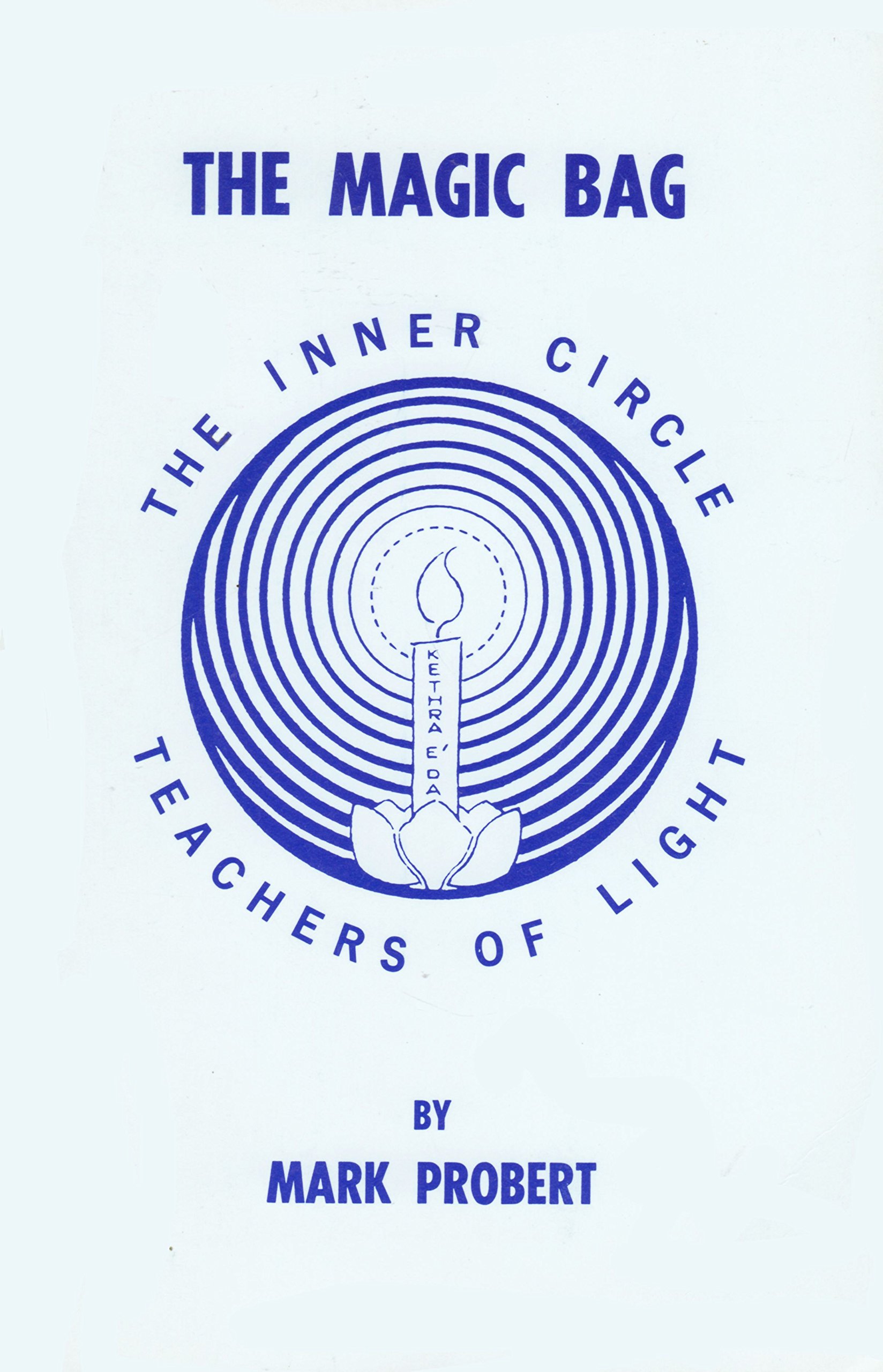 Not long after they were married, Irene made a casual remark that would change the course of their lives. She told Mark that he often talked in his sleep. The odd thing was that when this happened, it sounded as if he were speaking a foreign language. Soon the couple met Meade Layne, a former university professor who had left academia to devote his life to the study of psychic phenomena. As Probert put it, “he had considerable interest and knowledge in the fields of metaphysical and occult laws.” It was Layne who convinced Probert that his nocturnal mumblings could be evidence that he was in fact a trance medium.
Not long after they were married, Irene made a casual remark that would change the course of their lives. She told Mark that he often talked in his sleep. The odd thing was that when this happened, it sounded as if he were speaking a foreign language. Soon the couple met Meade Layne, a former university professor who had left academia to devote his life to the study of psychic phenomena. As Probert put it, “he had considerable interest and knowledge in the fields of metaphysical and occult laws.” It was Layne who convinced Probert that his nocturnal mumblings could be evidence that he was in fact a trance medium.
The idea that Probert was perhaps channeling entities from beyond was put to the test during an experimental séance. Recounting his experience years later, Probert recalled that after being instructed to relax, he soon found himself in a state of euphoria so intense that he lost all awareness of the world around him. When he regained consciousness, he was told that he had been in a trance for some 45 minutes and had spoken in a voice not his own. The voice introduced itself as Martin Latamore Lingford, a New York showman who had lived earlier in the century. Lingford explained that he and a group of other entities from the “inner planes” had spent years preparing Probert for his role as channel. Soon, the voice promised, these other “controls” would also come forward and make themselves known.
During a number of séances over the next three years, the other controls—collectively known as the Inner Circle—did indeed appear, and began to reveal their plan for Probert’s life. They explained that it was they who had chosen Irene to be not only his wife, but also “their personal guide and assistant in the work.” They emphasized that this work was to be “almost entirely of an educational nature” and not to “expect much in the way of personal matters.” On the surface this may seem a minor point. But this statement could be read as a conscious attempt by Probert to separate his work from earlier trance mediums of the spiritualist movement, who would often help the bereaved by contacting their “dear departed loved ones.” It seems that something more important was happening here.
In early 1945, Meade Layne began publishing a newsletter called The Round Robin. The first issue was sent out, somewhat experimentally, to some 15 to 20 people. Over time it grew, and after a name change to The Journal of Borderland Research, it endured into the current century. In the October 1946 issue, Layne explained that the mysterious object reported by the newspapers that month first came to his attention when he received a telephone call from Mark Probert, who told Layne that he had been watching the meteor shower from the top floor of a building when he sighted it. He described it as a luminous craft, “about the size of an extremely large plane,” with two reddish lights, moving very fast. He then added a surprising detail: “the flapping of its wings was plainly visible.”
The next day, Layne received a number of calls from other witnesses who agreed on some points of Probert’s description and disagreed on others. Why these witnesses would call Layne, and not the authorities, to report their sightings is not explained. In a footnote he adds that, “The record of such strange craft, objects, appearances in the sky has greatly increased since Charles Fort began his astonishing memo, and still grows.” This is an interesting comment given that it suggests that the era of the UFO dates to Charles Fort’s early work, the first volume of his “astonishing memo” being his Book of the Damned, published in 1919. What is more remarkable is that this statement was made a full eight months before public knowledge of UFOs was widespread, at least as any sort of organized concept. But early readers of Charles Fort were always a bit ahead of the curve in this respect.
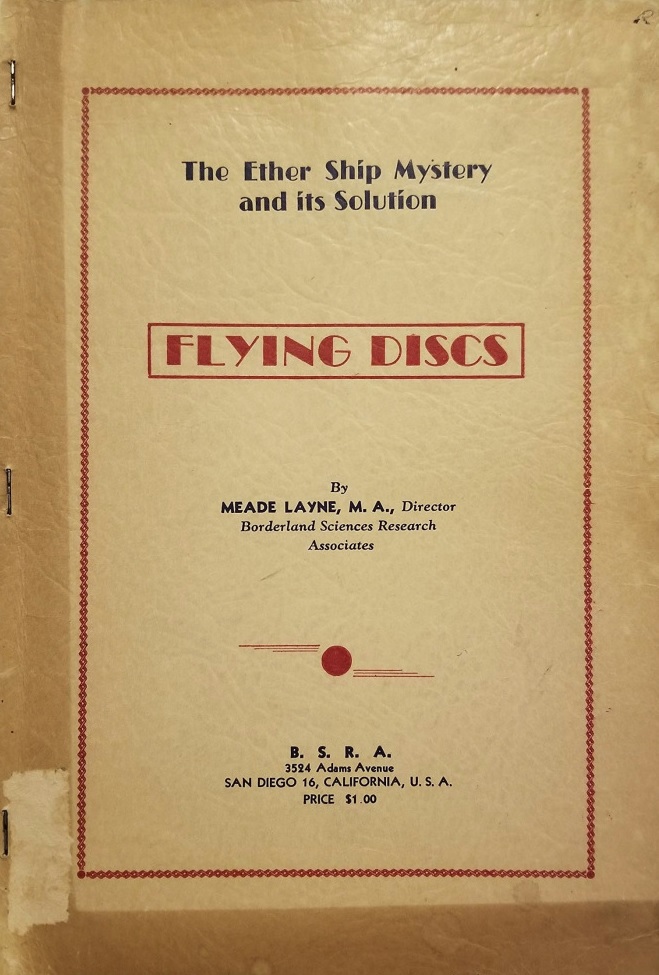 Mark Probert soon went into a trance (he now seemed to be able to do this at will) so that his controls could be asked about the object. From them he learned that it was called “the Kareeta.” (Elsewhere its name is given as “Careeta” and even “Corrida.”) In somewhat poetic language, the controls chimed in with their opinions about the craft. One said it came from a planet “many thousands” of miles away and that it was made of “balsam wood [sic] coated with a thin layer of alloy.” Another claimed that it came from “west of the moon” and that its pilots “want you to get a group of scientists who will meet them at some isolated spot.” At this point there is no indication that what was being described was anything other than a concrete object being piloted by physical beings.
Mark Probert soon went into a trance (he now seemed to be able to do this at will) so that his controls could be asked about the object. From them he learned that it was called “the Kareeta.” (Elsewhere its name is given as “Careeta” and even “Corrida.”) In somewhat poetic language, the controls chimed in with their opinions about the craft. One said it came from a planet “many thousands” of miles away and that it was made of “balsam wood [sic] coated with a thin layer of alloy.” Another claimed that it came from “west of the moon” and that its pilots “want you to get a group of scientists who will meet them at some isolated spot.” At this point there is no indication that what was being described was anything other than a concrete object being piloted by physical beings.
In late May 1949, responding to Walter Winchell’s claim that UFOs were actually “experimental guided missiles from Russia,” Layne told a newspaper reporter that the saucers in fact originated from a place called Etheria. This was not a place that was part of our own physical reality, but a “material world, with objects and people and a great civilization, and it lies all about us, though invisible and untouchable.” Based on what he learned from Probert’s controls, Layne had been developing this idea throughout 1947, in the pages of The Round Robin. This is a very early version of the Interdimensional Hypothesis, an idea that would become well known in UFO circles some two decades later. According to the hypothesis conceived by Layne, the saucers did not come from outer space as we know it. Neither did they come from “the astral plane,” but from what was effectively a parallel universe. He was to formalize this idea in 1950, with the publication of a mimeographed booklet called The Ether Ship Mystery and Its Solution.
In late 1953, Ray Palmer, already well known for his success with Amazing Stories and Fate, launched a new magazine called Mystic. In his chatty editorials, Palmer expressed a vision for the new publication that sounded almost as if he were attempting to create a new genre of literature, one that was somehow simultaneously both fact and fiction. This new enterprise served as something of a bridge between the fantastic fiction of Amazing Stories and the fantastic “fact” of Fate. In the third issue in March 1954, Palmer printed Roger Graham’s detailed account of how Probert, through his controls, successfully identified and diagnosed a number of Graham’s medical problems, diagnoses that were later confirmed by medical professionals. (This intersection of spiritualism and healing already had a long history by the early 1950s. In the US, Edgar Cayce was providing clairvoyant diagnoses as early as the turn of the century. Harry Edwards, Britain’s most famous spiritual healer, began his career in the 1930s.) This article signaled the beginning of what would become something of a fascination with Probert on Ray Palmer’s part. This may have been partly due to the number of letters the magazine received about Probert’s alleged abilities, both supportive and scoffing. Palmer was never one to let a good controversy go unexploited.
The cover of the August 1954 issue of Mystic featured paintings by Probert of three of his more talkative controls. These were Ramon Natalli, an astronomer who lived at the time of Galileo; Doctor Alfred Luntz, a 19th-century Anglo-German “clergyman for the High Episcopal Church of England”; and Yada Di Shi’ite, a 500,000 year old priest from a lost Himalayan city. Elsewhere Probert wrote that these controls, along with two others, appeared to him in visible form one night in 1947, insisting that he paint their portraits. He did not explain why disembodied entities from the inner planes who had lived in a number of different physical bodies over the millennia would want portraits of themselves, but some of these paintings were later used as illustrations in Probert’s book The Magic Bag.
The feature article in the August issue of Mystic was the transcription of a séance held by Probert, attended by Irene and a man identified only as “RGM.” The two were to present a set of questions to the controls that had been provided to them by Ray Palmer. The first of the Inner Circle to emerge was Dr. Luntz. The question posed to him concerned the extent of the U.S. government’s knowledge of the true nature of flying saucers. For a Victorian vicar, Luntz seemed to be quite knowledgeable on the subject. His answer was that the government did indeed know more about the phenomenon than was publicly admitted, but that there was no sinister motive behind it. The intent was simply to shield the public from the panic that would surely result from any revelation. He then went on to suggest, somewhat incongruously, that arch-debunker Donald Menzel’s recent book—Flying Saucers, published by Harvard University Press in 1953—was the result of an intentional conspiracy to suppress the reality of the saucers.
Renaissance astronomer Ramon Natalli then made a brief appearance, presenting his theory that all reality is driven by consciousness. With the opening acts out of the way, it was time for Probert’s star turn. Yada Di Shi’ite manifested, speaking his own impenetrable ancient language of Yuga: introducing Yada’s arrival with a barrage of gibberish would soon become something of a set piece for Probert. Undoubtedly this was a device intended to add drama to Yada’s arrival and to increase audience anticipation. Switching to English, Yada provided the basic outline of his autobiography. He said he had lived a half million years ago in the city of Kaoti, in a civilization called Yu. There he was a Ka-Ta, or priest. Once he completed the “33rd degree in the order called Shi’ite,” he was given the title Yada. Since that first life in the Himalayas, he had been reincarnated many times, the last being in China 500 years ago. In this description, Yada presented himself as something between a bodhisattva and a Scottish Rite Mason. He said that he had not experienced any “breaks in consciousness” since his original incarnation on Earth, and that anyone could achieve this. He then explained that reality is illusory but that mankind can rise out of this illusion by degrees. He closed with the revelation that no single path leads to enlightenment, but that “all of man’s experiences are to be classified as initiations into higher and to more complete states of awareness.”
Over the next year it was a rare copy of Mystic that did not feature Probert somewhere in its pages. An interesting letter from an anonymous correspondent who claimed to work in the mental health industry appeared in the August 1955 issue. He wrote that after seeing Probert in person he was “very disillusioned.” Among his complaints was that the messages the controls delivered were unoriginal, and seemed to have been gleaned from the library. Also unconvincing was the fact that the various voices that emerged from Probert—whether early modern Italian, Victorian English, or ancient Himalayan—always spoke in the same accent. “I think these trance states would not have become necessary had he not found himself a teacher with no students, a philosopher with no audience,” anonymous wrote, “consciously or unconsciously I believe that he is using the occult to put his own ideas across.”
The August 1955 issue also featured an advertisement for a long playing album, announcing that the public could now hear the voice of Yada Di Shi’ite at home. The ad copy was written in a tone that assumed the reader knew full well who both Probert and Yada were. It explained that the record had been made from an unedited, hour-long tape of a séance held before a live audience. Yada would begin the session by speaking in his ancient native tongue, before switching to English. The Himalayan priest would then give his opinions on such topics as reincarnation and the purpose of life, before taking questions from the audience. All this could be in the reader’s mailbox by sending only $4.98 to Inner Circle Records in Ojai, California.
As mentioned, to my knowledge, no copy of this record has ever turned up. Why? The first and most likely answer is that it was only ever pressed in an extremely limited quantity, never sold well, and any remaining stock was eventually disposed of. This has been the unfortunate fate of so many ephemeral recordings over the years. Another possibility is that it never existed. If that is the case, then the ad for the record was likely an attempt to secure orders before actually pressing and shipping the disc. This model was definitely in use at the time for self-published saucer and occult books, although in those cases buyers were usually told that they were placing an advance order.
The offices of Mystic were in Evanston, Illinois, and Mark Probert was based in San Diego. Why then is the address given in the ad in Ojai, California, a tiny town more than 200 miles away from Probert’s home? The obvious answer is that the company producing the record was located there—which would make sense, given’s Ojai’s historical connection to Theosophy and the esoteric tradition. It does not appear that Inner Circle Records actually existed outside of this release, however. In all likelihood, it is simply the label name Probert chose to use when arranging its manufacture with a custom pressing outfit. And in a town as small as Ojai, it would seem that the company should be fairly easy to identify.
At first sight, a tantalizing possibility is that the record may be a very early release by the legendary Two: Dot Records. This label was run by husband-and-wife team Dean and JoAnne Thompson from their home on the outskirts of town. They began doing run-of-the-mill custom work in the 1950s before tapping into the regional rock scene in the late 1960s. Examples of the label’s 1970s output by bands like Hendrickson Road House or The Mystic Zephyrs 4 sometimes sell for as high as four figures.
However, there was also another label operating out of Ojai in the 1950s. Educo Records was founded in 1953, releasing classical recordings to be used for music appreciation classes in schools and colleges. The company operated out of Ojai during its first few years of existence, and later relocated to nearby Ventura. Given that the PO Box address in the Mystic ad was that used by Educo while in Ojai, it is reasonable to conclude that this was the company contracted by Probert to manufacture the LP. So far, no other custom releases by Educo have been identified. But like other small labels of the era, it is likely that Educo accepted custom contracts to increase revenue, the finished product bearing no evidence of the manufacturer so as not to confuse private releases with the company’s main brand in the minds of consumers.
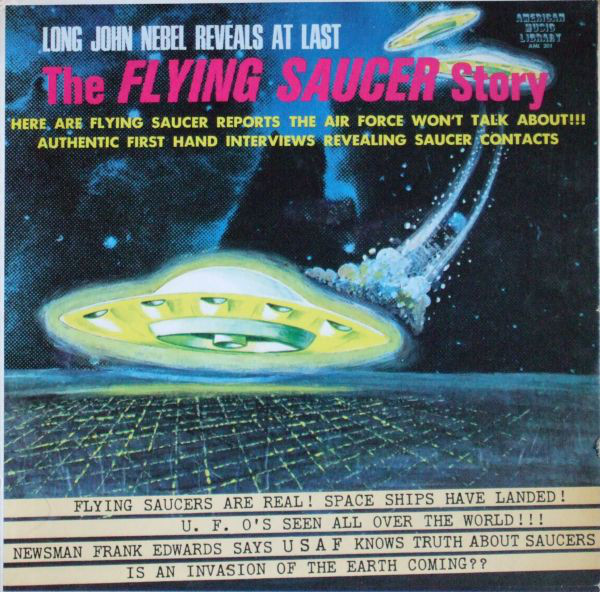 It is not known whether Probert’s LP contained any references to the flying saucer phenomenon. By 1956, however, Yada was giving audiences his opinion on the reality and nature of UFOs, still promoting the idea that they were not from other planets but from another dimension. In early 1957, Probert was a guest on Long John Nebel’s radio show in New York, a regular stop for saucer celebrities. In 1960, he appeared at the Giant Rock Spacecraft Convention—the most famous and one of the largest of the early UFO conventions—where he channeled Yada for an audience, with Irene acting as master of ceremonies. Here, as usual, Yada first emerged speaking Yuga before switching to English.
It is not known whether Probert’s LP contained any references to the flying saucer phenomenon. By 1956, however, Yada was giving audiences his opinion on the reality and nature of UFOs, still promoting the idea that they were not from other planets but from another dimension. In early 1957, Probert was a guest on Long John Nebel’s radio show in New York, a regular stop for saucer celebrities. In 1960, he appeared at the Giant Rock Spacecraft Convention—the most famous and one of the largest of the early UFO conventions—where he channeled Yada for an audience, with Irene acting as master of ceremonies. Here, as usual, Yada first emerged speaking Yuga before switching to English.
A cynical observer might point out that Probert, by his own admission, was an ex-vaudevillian, and that this standard performance—repeated ad infinitum—was beginning to have something of the feel of a tired old vaudeville turn. The couple continued touring the country performing séances throughout the 1960s, and after Irene’s death in 1966, Probert continued his work alone.
Probert’s last known major public appearance was at the Northern California Space Convention in October 1968. At this point he was telling audiences that he was not a medium, but a “telegnostic.” This term not only served to further distance him from the stereotype of the medium left over from the days of spiritualism, but implied something deeper. The term suggested that he was not just contacting spirits, but was somehow transmitting gnosis from some distant location. It also served to position him not simply as a fortune teller or mentalist, but as something much more serious: a gnostic. Mark Probert died a few months later, in early 1969.
It is easy in our rationalist era to cast Mark Probert as one in a long line of spiritualists who were either delusional or blatantly fraudulent. But this point of view ignores the content of his message. What is remarkable about the séance published in the August 1954 issue of Mystic, is that in a single, short session Probert—or, if you prefer, his controls—was able to seamlessly guide the conversation from possible conspiracies around the existence of UFOs, to ideas about reality being a by-product of consciousness, ending with hints of a grand Buddho-Masonic theory of release from the cycle of reincarnation, resulting in something resembling Buddhahood. In doing so, he provided a tantalizing suggestion that these things might somehow all be related. It is also striking that the questions raised by Natalli and Yada during the séance are still those that concern serious modern students of anomalous phenomena, mysticism, and even physics. In effect, Probert seemed to be telling audiences to move away from the obvious conclusions they were making not only about saucers, but about existence itself.
As far back as 1947, when most people were just hearing the term “flying saucers” for the first time, Mark Probert had already rejected myopic materialism, and was telling the world that perhaps the very fabric of reality was quite different than our model of it. And though wrapped in a presentation that borrowed heavily from theosophy, spiritualism, and the vaudeville stage, Probert’s ideas foreshadowed an important direction that one school of thought was to take in the future. This move away from the idea of UFOs as a nuts and bolts phenomenon, and towards a more blended view involving theories of consciousness, human cognition, and quantum theories of time and space is one that is fast gaining momentum today.
Many myths and legends center around something lost, an object or a bit of knowledge; its very absence imbues the missing thing with meaning, even importance. It is likely, however, that the idea of a lost recording of the voice of Yada Di Shi’ite is much more interesting than the actual reality, were a copy ever to surface. But puzzles like the one surrounding this album are what keep researchers moving forward, and in the process uncovering the next riddle to be solved. The UFO phenomenon itself is more koan than puzzle. It is also both an ontological and an epistemological mystery, so it should come as no surprise that a study of recordings related to it would begin with its own discographical mystery.
![]() Stephen Canner is an archivist, musician (The Victor Mourning), and historian of artifacts that emerge from the margins of culture. He blogs at Mediated Signals.
Stephen Canner is an archivist, musician (The Victor Mourning), and historian of artifacts that emerge from the margins of culture. He blogs at Mediated Signals.
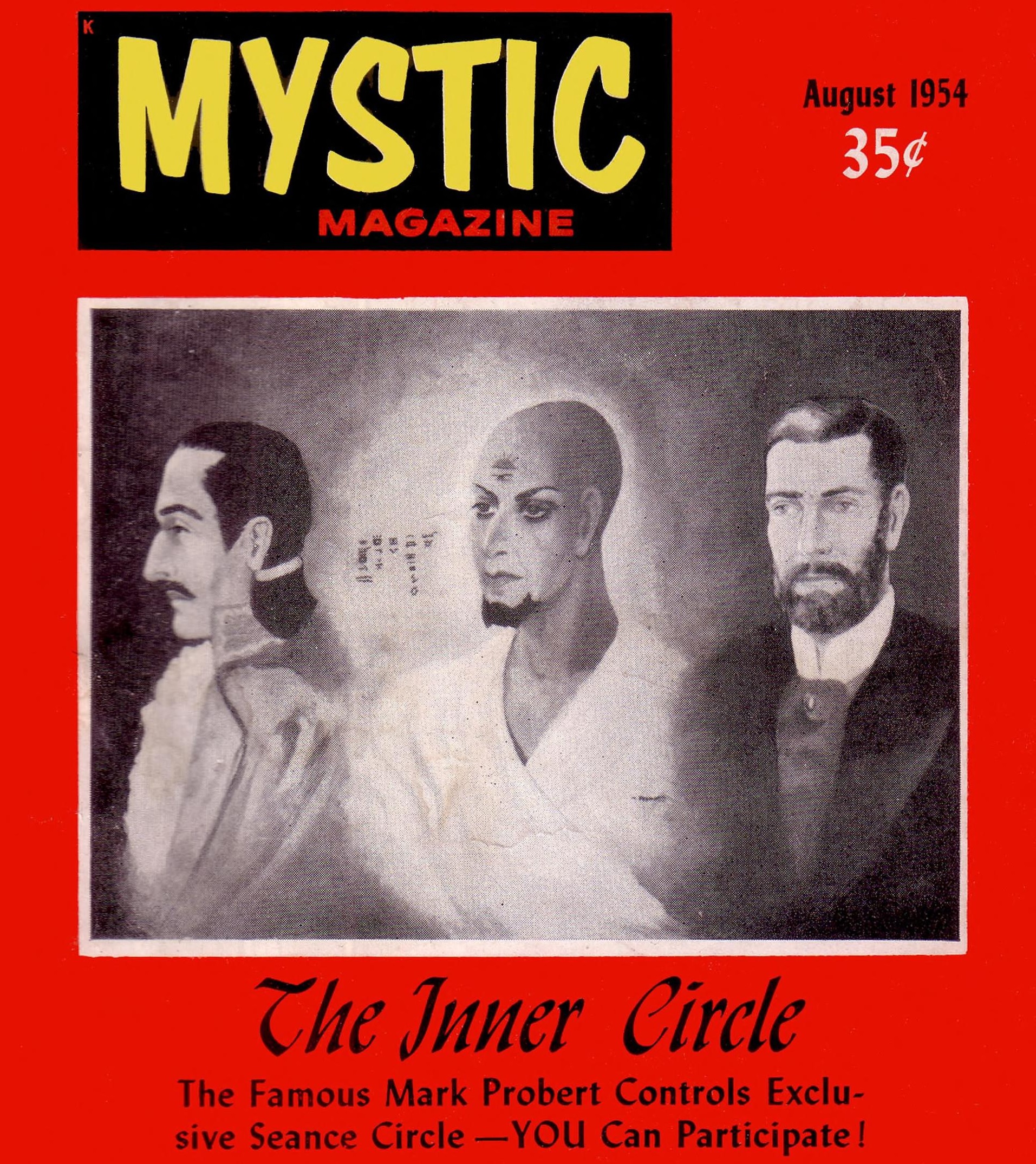
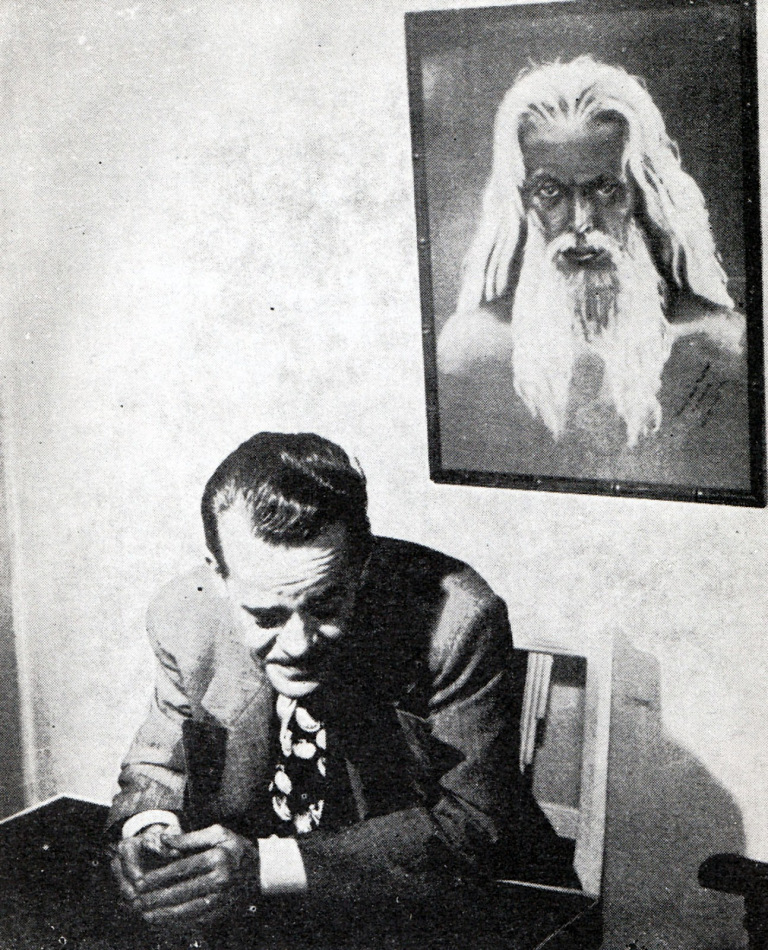
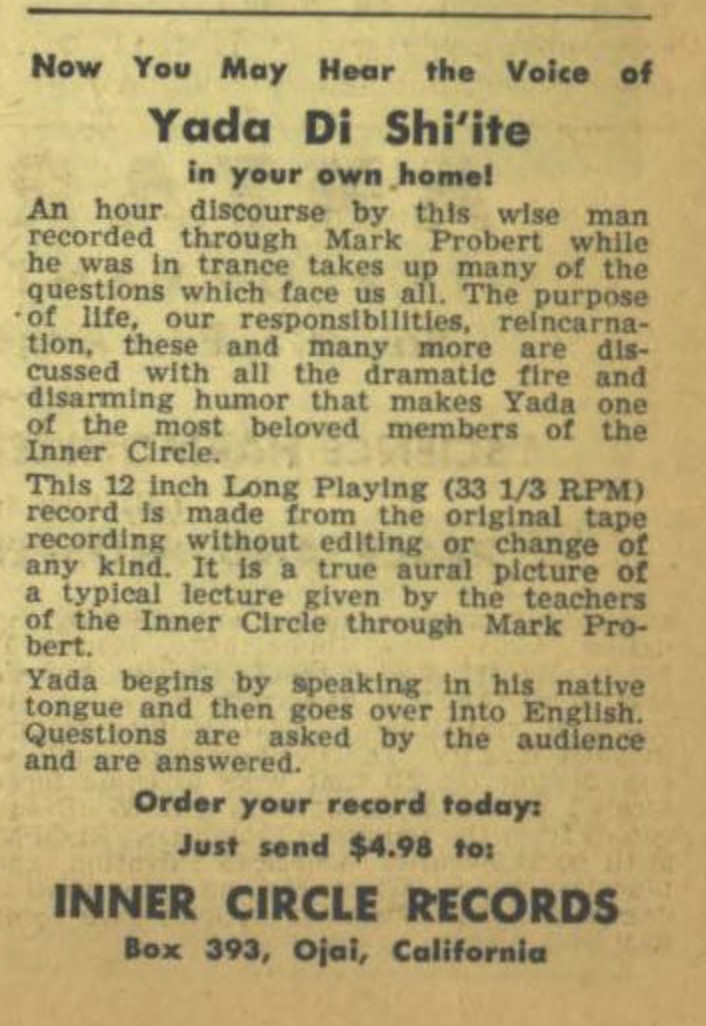




Anything is possible, we humans are brainwashed, programmed and lied to from birth, this grand illusion we exist in will remain a mystery until we break the cycle of conditioning by the forces that control our fate.
Hello, I have had an original copy of the Inner Circle book with Mark Propert’s signature since I was a teenager in the 90’s. This book is from 1950. I have kept it all these years, not really understanding much about it. I am just now looking up Mark Probert and find it so interesting. Thanks for all of the info!
Pingback: Mystery Solved? A Mark Probert Update | Mediated Signals